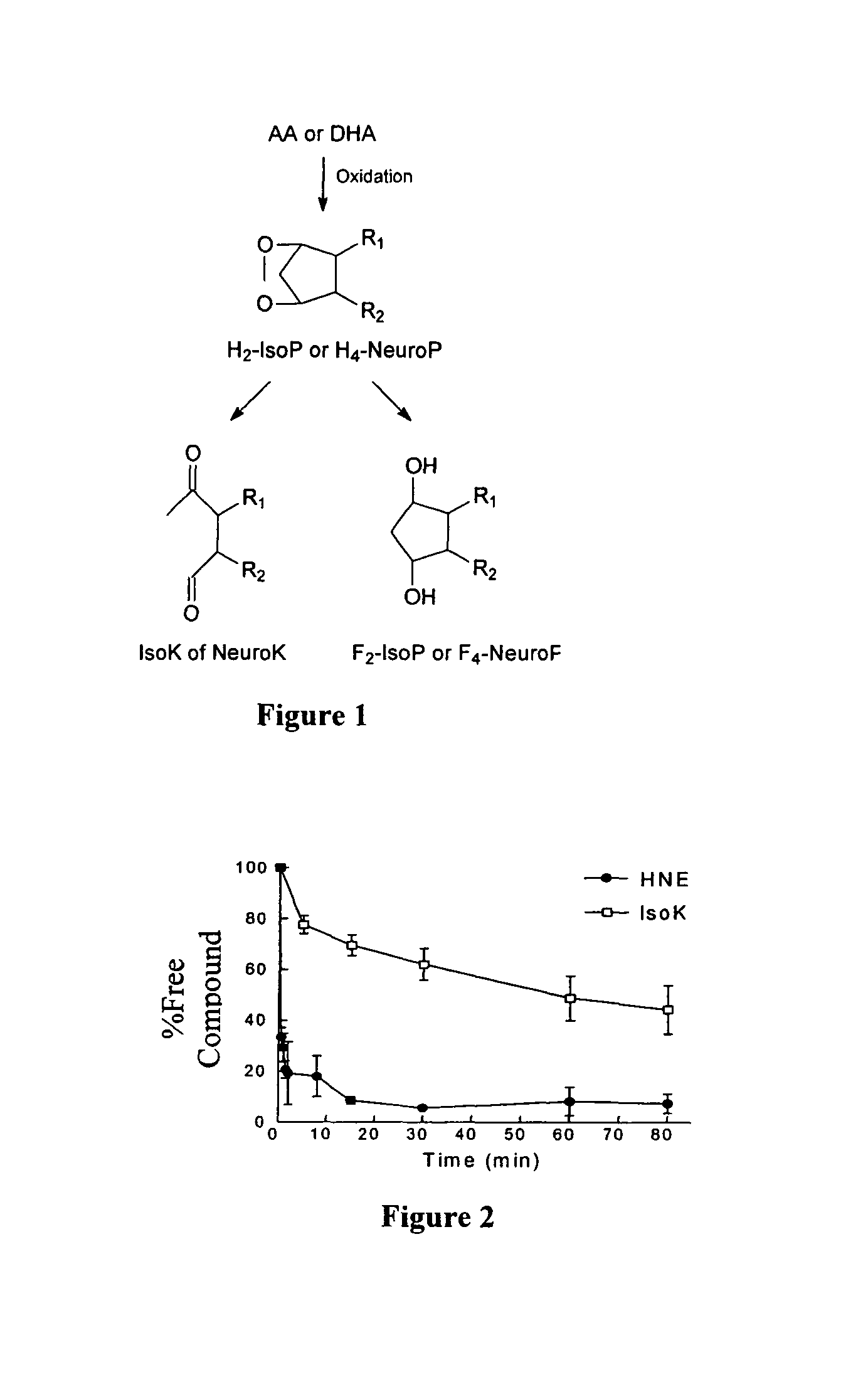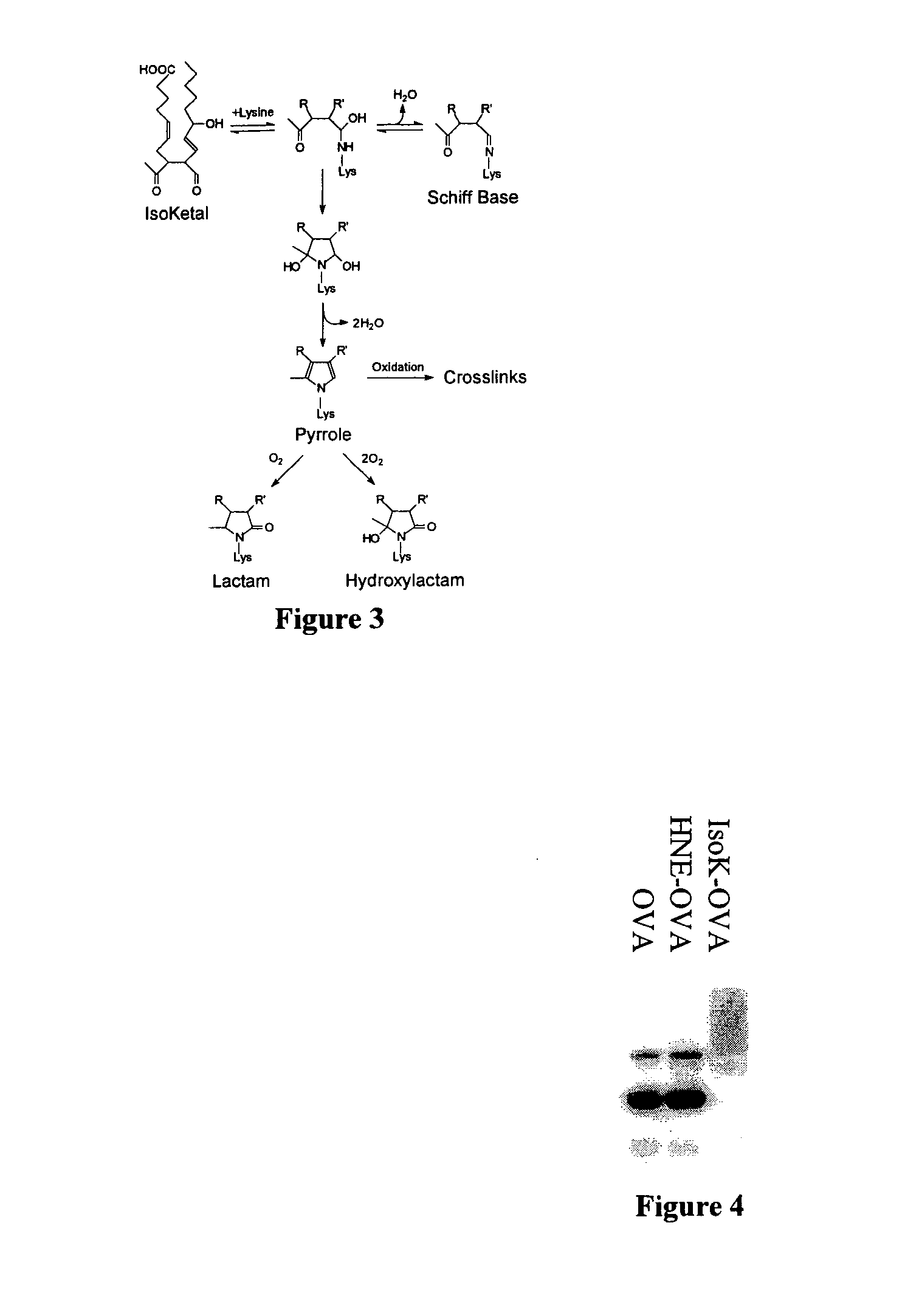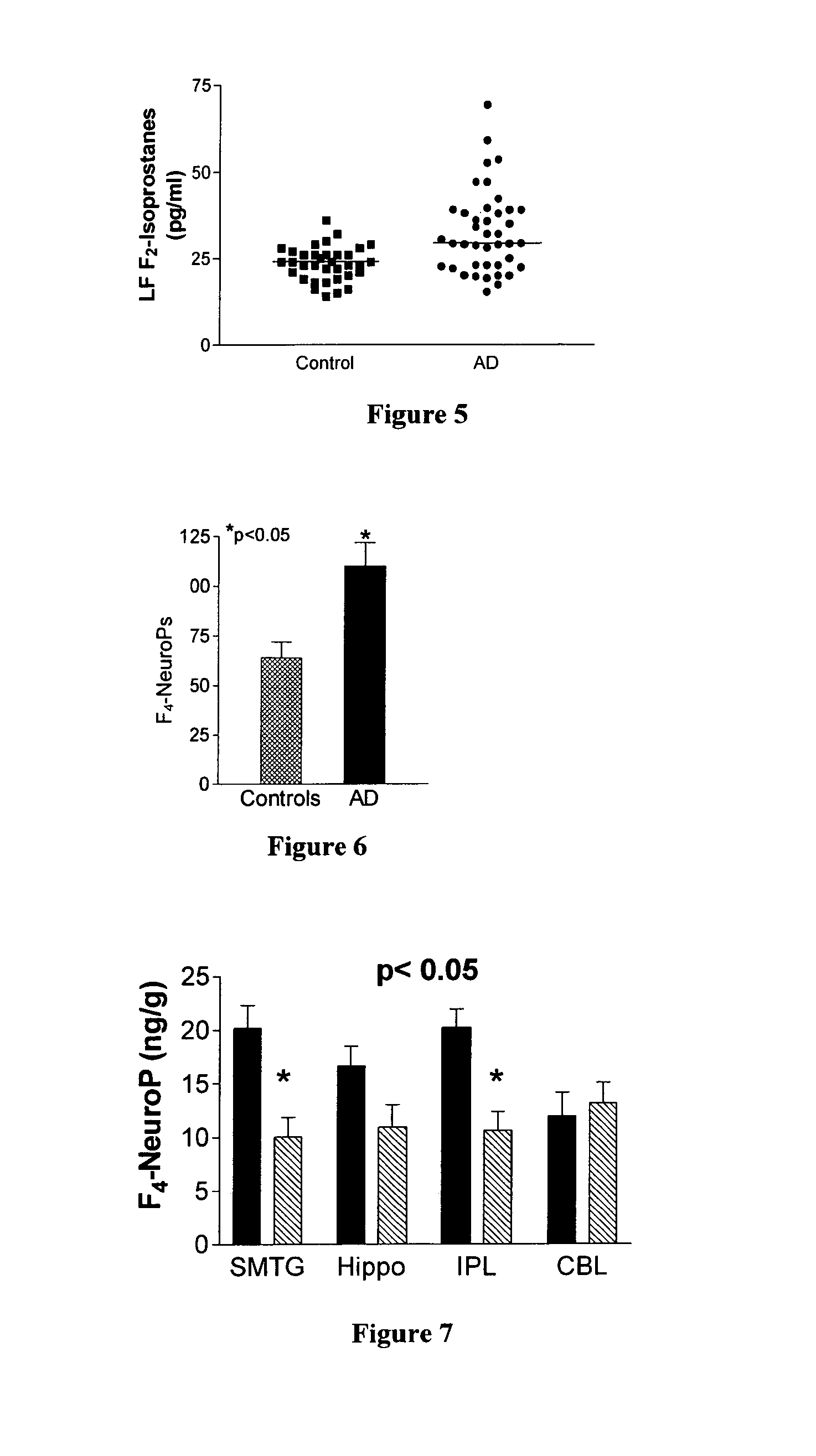Method of preventing and/or treating oxidant injury in neurodegenerative and oxidative diseases
a neurodegenerative and oxidative disease, preventing and/or treating oxidant injury, can solve the problems of aging-related dementia, a major public health problem, and only about 0.5% of all mutations, and achieve the effects of reducing choline acetyltransferase activity, reducing acetyltransferase activity, and reducing acetyltransferase activity
- Summary
- Abstract
- Description
- Claims
- Application Information
AI Technical Summary
Benefits of technology
Problems solved by technology
Method used
Image
Examples
Embodiment Construction
[0071]As stated above, a first embodiment of the present invention is to provide a method for accessing the formation of IsoK and NeuroK adducts quantitatively and qualitatively in AD brain. This embodiment can comprise determining whether levels of IsoK and NeuroK protein adducts are increased in CSF from patients with AD compared to age-matched controls. This method may be used to obtain a single chain antibody against NeuroK lysyl adducts and / or determine the localization of IsoK and NeuroK adducts in AD brain and other age-related dementias.
[0072]The present inventors have discovered that levels of F2-IsoPs and F4-NeuroPs are significantly increased in AD brain, and that in studies both in vitro and in vivo, IsoK and NeuroK formation parallels the formation of F2-IsoPs and F4-NeuroPs, respectively. FIG. 5 shows CSF F2—ISOP concentrations in 41 living patients with probable AD and 35 aged matched controls. The average time since diagnosis for the AD patients was less than two yea...
PUM
| Property | Measurement | Unit |
|---|---|---|
| time | aaaaa | aaaaa |
| frequency | aaaaa | aaaaa |
| pH | aaaaa | aaaaa |
Abstract
Description
Claims
Application Information
 Login to View More
Login to View More - R&D
- Intellectual Property
- Life Sciences
- Materials
- Tech Scout
- Unparalleled Data Quality
- Higher Quality Content
- 60% Fewer Hallucinations
Browse by: Latest US Patents, China's latest patents, Technical Efficacy Thesaurus, Application Domain, Technology Topic, Popular Technical Reports.
© 2025 PatSnap. All rights reserved.Legal|Privacy policy|Modern Slavery Act Transparency Statement|Sitemap|About US| Contact US: help@patsnap.com



